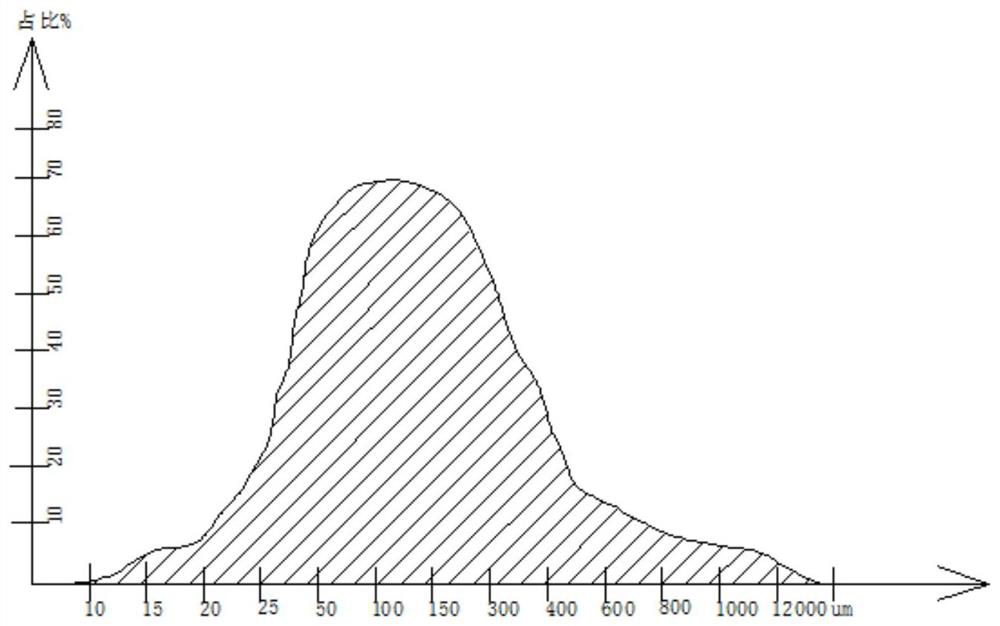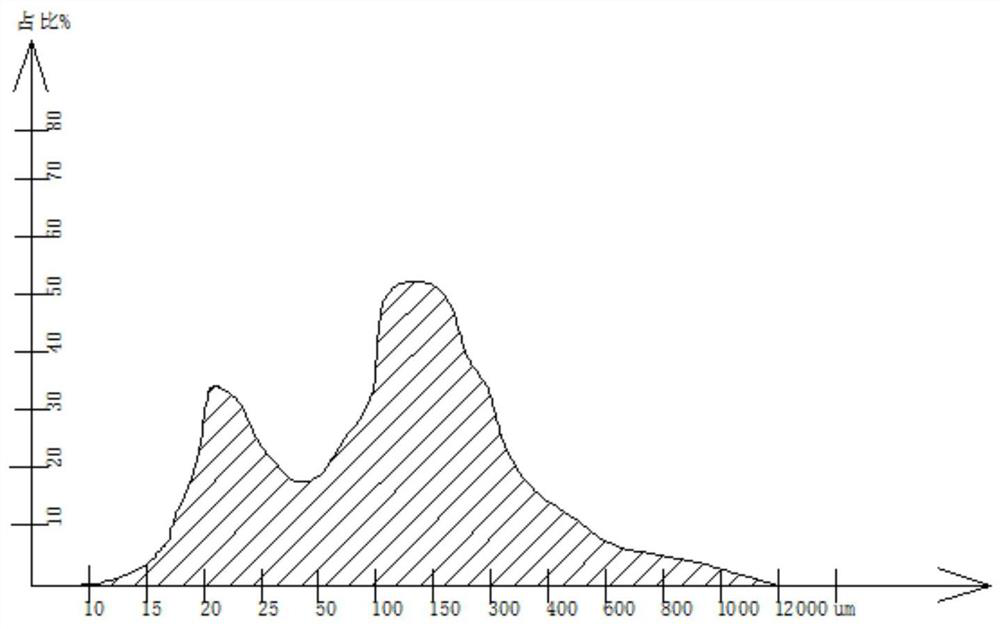Method for changing pulping process of rod mill
A rod mill and pulping technology, applied in grain processing, etc., can solve problems such as water imbalance, waste of water resources, wear and tear on pipes and equipment caused by minerals
- Summary
- Abstract
- Description
- Claims
- Application Information
AI Technical Summary
Problems solved by technology
Method used
Image
Examples
Embodiment 1
[0038] Step 1. Experiment with the existing slurry production line of a phosphate rock factory in Shanxi. The specific operation process is as follows:
[0039] Through laboratory research, the optimal lubricating particle size of the phosphate rock is 15 μm, which is the average particle size d of the A component required for the phosphate rock to make pulp A is 15μm, then the average particle size of grinding d A It is 15μm phosphate rock powder (dry basis), which is directly added to the existing slurry for experimentation.
[0040] The experimental process is as follows:
[0041] (1) Preparation of Component A: According to this plan for actual production, extract 30wt% protoplasm, design d cp = 120 μm for classification (just to achieve A:B=4:6, ensuring that A reaches 12wt% of the total slurry), less than d cp = 120μm particles are ground to an average particle size d A = 15μm A component, test its angle of repose 26°; greater than d cp =120μm particles are reshaped...
Embodiment 2
[0109] Other steps are the same as in Example 1, except that the grinding particle size of component A is 10 μm.
Embodiment 3
[0111] Other steps are the same as in Example 1, except that the grinding particle size of component A is 20 μm.
PUM
| Property | Measurement | Unit |
|---|---|---|
| Particle size | aaaaa | aaaaa |
| Apparent viscosity | aaaaa | aaaaa |
| Viscosity | aaaaa | aaaaa |
Abstract
Description
Claims
Application Information
 Login to View More
Login to View More - R&D
- Intellectual Property
- Life Sciences
- Materials
- Tech Scout
- Unparalleled Data Quality
- Higher Quality Content
- 60% Fewer Hallucinations
Browse by: Latest US Patents, China's latest patents, Technical Efficacy Thesaurus, Application Domain, Technology Topic, Popular Technical Reports.
© 2025 PatSnap. All rights reserved.Legal|Privacy policy|Modern Slavery Act Transparency Statement|Sitemap|About US| Contact US: help@patsnap.com


